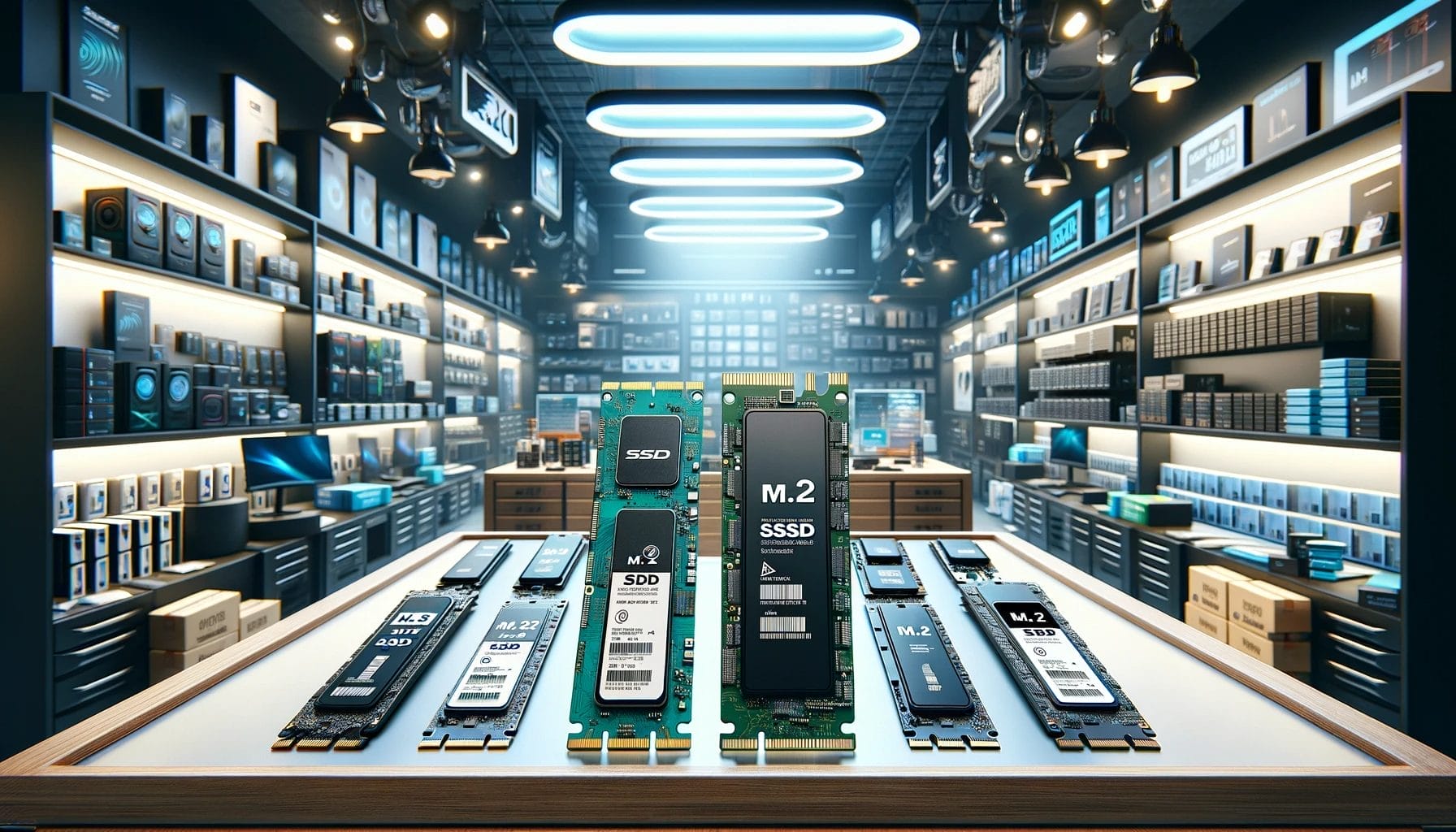Choosing Your M.2 SSD: Speed or Savings

In today’s digital era, choosing the best storage solution necessitates a comprehensive examination of individual requirements and available options.
M.2 solid-state drives stand at the forefront of this decision-making process, offering a blend of compact design and robust performance.
The choice between the superior speed of PCIe-based M.2 SSDs and the more economical SATA-based variants is a complex one, influenced by the user’s workload demands and budgetary limits.
This article aims to provide a comprehensive evaluation of the advantages and trade-offs associated with each option.
By delving into the technical specifications and practical implications, we endeavor to equip readers with the discernment necessary to navigate this crucial aspect of modern computing, ensuring an informed selection that best aligns with their performance requirements and financial considerations.
Key Takeaways
- Understanding the different form factors and interfaces of M.2 SSDs is crucial in making the right choice.
- The distinction between SATA and NVMe M.2 SSDs is important, as they have different performance levels and compatibility requirements.
- PCIe M.2 SSDs offer faster storage solutions and superior speeds, making them suitable for heavy-duty productivity tasks, data-intensive applications, and gaming.
- SATA M.2 options provide affordability, sufficient performance for general computing tasks, universal compatibility, and a seamless upgrade path.
Understanding M.2 Form Factors
When delving into the world of M.2 solid-state drives (SSDs), it is imperative to understand the various form factors and their implications for compatibility and performance.
M.2 form factor options are not one-size-fits-all; they differ in dimensions and interface, which directly influence their functionality within specific systems.
It is crucial to discern between M.2 SSDs utilizing SATA and those leveraging the superior bandwidth of NVMe, as this distinction affects the drive’s speed and efficiency.
M.2 compatibility factors involve a careful examination of the motherboard’s specifications, particularly the availability and allocation of PCIe lanes, which determine the extent to which the SSD can perform to its full potential.
An analytical approach to these factors ensures optimal SSD selection, marrying device compatibility with desired performance outcomes.
Benefits of PCIe M.2 SSDs
Why should one consider PCIe M.2 SSDs for their computing needs?
Foremost, these drives offer faster storage solutions, essential for users with demanding workloads. Unlike their SATA counterparts, PCIe M.2 SSDs utilize the high-speed PCIe bus, providing superior sequential read and write speeds. This is particularly beneficial in heavy-duty productivity tasks and data-intensive applications where rapid data transfer rates can significantly reduce wait times.
For enthusiasts and professionals alike, these SSDs can dramatically enhance gaming performance, leading to faster game load times and smoother in-game experiences. When responsiveness and speed are paramount, the higher throughput of PCIe M.2 SSDs can be a game-changer.
Analytically speaking, if the motherboard supports NVMe protocol, opting for a PCIe M.2 SSD is a savvy investment for future-proofing one’s system.
Advantages of SATA M.2 Options
Despite the rising popularity of PCIe M.2 SSDs, SATA M.2 options remain a widely chosen solution due to their affordability and sufficient performance for general computing tasks. The SATA M.2 affordability is particularly appealing for consumers who require a balance between cost and capability. These drives offer a pragmatic approach to storage, delivering speeds that are markedly superior to traditional hard drives while avoiding the premium attached to PCIe models.
Moreover, SATA M.2 compatibility is another compelling advantage. These SSDs are often supported by a broader range of motherboards, including older systems that may not accommodate the latest PCIe standards. This universal compatibility ensures a seamless upgrade path for users looking to improve their system’s performance without the need for extensive hardware modifications.
Making the Right M.2 Choice
Understanding the distinct advantages of SATA M.2 SSDs, it is equally critical to evaluate individual needs and system specifications to make an informed decision on the right M.2 SSD for your setup. When choosing the right M.2 SSD: Performance or Affordability, several factors come to the fore:
- Performance Needs
- Intensive tasks require faster PCIe SSDs
- Everyday use may not necessitate top speeds
- System Compatibility
- Motherboard support for NVMe or SATA
- Available PCIe lanes and M.2 slots
- Budget Constraints
- PCIe SSDs are pricier but offer speed
- SATA SSDs balance cost and performance
Analyzing these factors to consider when selecting an M.2 SSD ensures that the choice aligns with both demands and resources, optimizing the value received from the investment.
Performance Vs. Price Considerations
When evaluating M.2 SSD options, the trade-off between performance and price becomes a pivotal consideration for consumers and professionals alike. A thorough performance comparison reveals that PCIe M.2 SSDs outpace their SATA counterparts, particularly in tasks involving large file transfers and applications requiring rapid data access. However, this superior performance comes at a premium, necessitating a detailed cost efficiency analysis.
The decision ultimately hinges on the intensity of the workload and the financial flexibility of the buyer. For users whose activities center around general computing, the cost savings offered by SATA M.2 SSDs may justify the modest sacrifice in speed.
Conversely, for those engaged in high-end gaming or content creation, investing in PCIe M.2 technology may yield a more satisfying and productive experience, despite the higher initial expenditure.
Conclusion
In conclusion, the selection of an M.2 SSD ultimately centers on the equilibrium between performance and cost-efficiency.
While PCIe M.2 SSDs offer superior speed and are optimal for demanding applications, SATA M.2 SSDs provide a budget-friendly alternative with sufficient capabilities for standard use cases.
Discerning consumers must assess their specific requirements, system compatibility, and financial constraints to determine the most suitable storage solution, ensuring an optimal blend of functionality and fiscal prudence in their technological investments.

